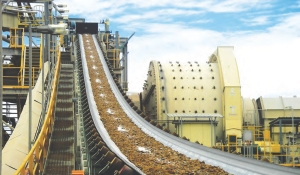Barrick Gold’s (ABX-T, ABX-N) North Mara mine in Tanzania has had its share of problems.
With relations with some in the surrounding community al- frayed, matters came to a head on Dec. 11, when some 3,000 villagers descended on the mine.
While specifics of the incident have yet to be confirmed, what is agreed upon is that villagers confronted Barrick security officers and overwhelmed them, with some continuing down into the open pit to steal parts from the mining equipment, then setting the remnants ablaze.
The damage was estimated at roughly US$7 million.
One villager was reported dead, although his identity and the circumstances of his death remain unclear.
Community members told local news agencies that the man was shot while arguing with Barrick’s security personnel. He was said to be unarmed. It was the shooting, they say, that sparked the crowd to stone security and descend into the pit to destroy equipment.
“We’re doing our own investigation and the police are doing theirs,” says Vince Borg, senior vice-president of corporate communications at Barrick. As for when he expects such an investigation to wrap up, Borg says, “it will take as long as it takes to get to the bottom of things and sort out the facts as opposed to all the speculation.”
Tensions with locals have flared in the past with publications like the online independent journalists’ outlet The Dominion reporting that artisanal miners and farming villagers resent being cleared off the property.
North Mara is in the northwestern part of Tanzania in the Mara region, roughly 100 km east of Lake Victoria and 20 km south of the Kenyan border.
It sits apart from Barrick’s three other key projects in the country — Bulyanhulu, Tulawaka and Buzwagi — all of which lie in a cluster stretching westward from the central part of the country.
“It’s a complicated, challenging environment to operate in,” Borg says of the Mara region. “It is close to the border so there is an influx of immigrants, artisanal and illegal miners. And there are a lot of transient people — they hear there’s a gold mine and it invites a lot of the standard issues around mining — but at North Mara they are exacerbated by a few activists that foment and benefit from conflict, so they encourage it.”
Borg also says a lack of infrastructure, resources and government presence in the area makes matters more difficult.
Beyond its educational and social programs in the area, Barrick is also trying to improve the situation by launching a program to help train artisanal miners to stake different ground and use more modern and environmentally sound mining methods.
Barrick acquired North Mara as part of its acquisition of Placer Dome in 2005. The mine, which was already in operation when Barrick took it over, is made up of three open-pit deposits — Gokona, Nyabirama and Nyabigena.
Together, the deposits have proven and probable reserves of 36.5 million tonnes grading 3.4 grams gold for 3.6 million oz. and measured and indicated resources of 12.5 million tonnes grading 2.2 grams gold for 801,000 oz. gold.
For the nine months ending Sept. 30, 2008, North Mara processed 2.3 million tonnes of ore at an average grade of 3 grams gold per tonne, yielding 155,000 oz. of gold at a total cash cost of US$829 per oz.
Those costs were considerably higher than the previous year, when the mine produced 237,000 oz. of gold at a total cash cost of US$503 per oz., and compare unfavourably with Barrick’s overall cash costs, which are in the US$425-to US$445-per-oz. range.
Total cash costs per ounce for Tanzania in the third quarter of 2008, were 71% higher than the same period of 2007 due to lower production levels, higher waste stripping costs at North Mara, lower copper byproduct revenues, and rising labour, oil, electricity and consumables costs, Barrick says.
Such factors, when combined with word of a revision of the country’s 1997 mining code, with possible burdensome consequences for miners, had rumours swirling last year that Barrick was considering leaving the country entirely.
Adding to the speculation was the fact that gold production from Africa represented just 5.5 million gold oz., or 7% of Barrick’s total production for the first nine months of 2008.
But despite the higher costs, and relatively small output relative to its global portfolio, Borg reaffirmed Barrick’s commitment to Tanzania and pointed out that, at US$600 per oz., the company’s total cash costs at its African operations are comparable to those at its Australian operations.
Even if leaving Tanzania altogether is not in the cards, with decreased production and subsequent higher production costs added to the continual tension with the community, is North Mara itself worth all the effort?
Production at the mine — its second smallest in the country — decreased by 25% in the third quarter, with machine availability and ongoing processing issues negatively impacting ore grades.
“While North Mara presents its own challenges, we’re not expecting a shutdown,” says Paul Burchell, an analyst with Dundee Securities.
Burchell says in light of Barrick’s growing presence in Tanzania — as illustrated by the imminent opening of the Buzwagi mine –North Mara offers synergies to the company.
Slated to go into production later this year, Buzwagi has proven and probable reserves of 72.7 million tonnes grading 1.7 grams gold for 3.6 million oz. It is expected to produce between 250,000 and 260,000 oz. of gold per year through its first five years of operation.
Those are not the kind of numbers a gold miner walks away from easily — not even one with as many ounces spread around the globe as Barrick.


Be the first to comment on "Barrick Holds Strong In Tanzania"